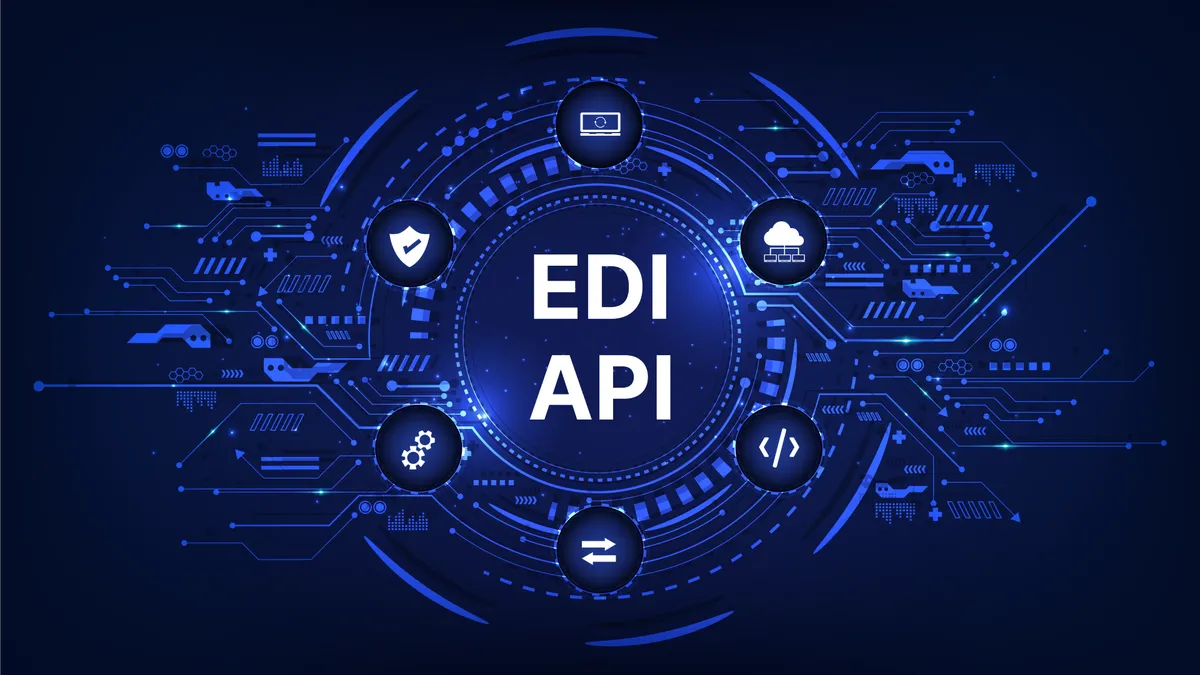Electronic data interchange (EDI) has been the gold standard for companies looking to streamline supply chain operations. The technology allows companies to replace manual, paper-based communication with automated correspondence that exchanges data between integrated systems and trading partners.
This allows companies to scale their operations while minimizing costs, errors and processing times—leading to more satisfied trading partners and more reliable data exchanges.
While EDI integration is a great foundation, there are ways to further maximize EDI’s impact. One way is to utilize APIs. API integration offers real-time data processing, new levels of automation and expansive integration capabilities with systems, applications and trading partners.
So while companies commonly debate whether they need EDI or API, they should really be focusing on why their business can actually benefit from having both EDI and API capabilities—especially when it comes to automation projects.
EDI Processes You Can Automate With API
APIs can add additional levels of automation to EDI processes to make the technology even more efficient. Below, we cover 5 EDI processes that can benefit from the help of API automation.
1) ERP Data Entry
An ERP is often used to collect, store, manage and interpret data, along with centralizing business processes. Therefore, an ERP must always be up-to-date with the latest data.
Since APIs provide real-time data, integrating your ERP with your EDI platform using API integration ensures your ERP always has the most recent data available regarding order processing. So every time your business receives or sends a purchase order, purchase order acknowledgment, invoice, etc. via your EDI solution, this information will be passed to your ERP to log the information.
2) Compliance Validations
When sending a trading partner an EDI document, it can take a few days or even weeks for a trading partner to review it. If the EDI document does not meet the trading partner’s EDI requirements (i.e. it is non-compliant) they may reject the document. This can lead to costly chargebacks, SLA violation fees and poor vendor scorecards if a compliant EDI document is not sent to the trading partner by the agreed deadline.
“Cleo is continuously innovating Cleo Integration Cloud to support real-world EDI and API-based integration use cases with its unique single platform solution and as the B2B integration leader I’m confident Cleo will continue to meet and exceed the needs of the market.”—VP of IT, Verst Logistics
APIs can avoid this though with real-time validation. Real-time validation with APIs checks a document's data integrity and compliance against a specific trading partner’s st andards. This helps ensure that the documents being sent are compliant and will be accepted by the trading partner.
3) Mapping and Translation
For an ERP and EDI platform to share information, data mapping and translation need to occur so each platform receives data in a format they can underst and (ex. X12 and EDIFACT). APIs can assist this sequence by facilitating the data transfer from the EDI platform to the ERP (or vice versa), once the data is translated. Additionally, if the EDI platform does not have translation capabilities, APIs can interact with mapping tools that do have the capabilities to translate data.
4) Order Tracking
Customers are increasingly dem anding routine updates throughout an order’s lifecycle. For example, when an order is being fulfilled, when it leaves the warehouse, where it is on the delivery route, when it’s expected to be delivered, etc.
Since APIs allow for real-time data exchanges, companies can use the technology to provide order details to the customer at each stage of the fulfillment process. This helps customers better prepare for an order. For example, knowing when a delivery will arrive allows customers to determine the appropriate level of staff to have on h and and create enough space in their stock room.
5) Reporting and Analytics
Regular reporting is a good business practice to assess a company’s performance. APIs can be used to collect data from various integrated systems that can then be congregated and displayed in one location, whether it’s an ERP, EDI solution, or another application.
Companies can use this accurate information to analyze performance so they can identify which areas need improvement, which are sufficient and which are excelling. This information can also be used to identify trends and influence decision-making that can improve a company’s operations and revenue.
Beat Your EDI Automation Challenges
Without a solid EDI solution, automation can be a challenge. Oftentimes EDI solutions claim to have automation, but only in certain aspects.
Be sure to look for an EDI solution that offers end-to-end process automation for EDI & API, especially for processes like order-to-cash, procure-to-pay and load tender-to-invoice. Otherwise, you’ll be stuck with processes that have both automated and manual steps that create complexities and errors.
Additionally, look for an EDI solution that has API capabilities. This way you have the option and ability to utilize EDI and APIs depending on the needs of each scenario. Furthermore, by combining EDI’s foundational strengths, you can achieve a more streamlined and effective supply chain management process using APIs, ensuring that all aspects of your operations are aligned and functioning smoothly.
and as the dem and for APIs continues to increase, having both EDI and API capabilities guarantees your business will be able to meet the evolving requirements of future integrations, applications and trading partners.
EDI and API Automation with Cleo
Cleo Integration Cloud (CIC) is a comprehensive integration solution that has both EDI and API integration capabilities built into a single, easy to use platform.
With CIC, users have complete control over revenue-critical business processes like order-to-cash, procure-to-pay and load tender-to-invoice—along with the ability to fully automate each process end-to-end. and with in-depth visibility that lets users investigate any process, transaction and integration, your business is always equipped with the latest data. Our flexible service offerings make integrations easier than ever, with your choice of 100% self-service, transparent managed services and our unique hybrid approach.










